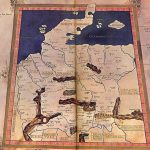This fall, archaeologists discovered an amazing find in a forest in western Russia about 10 km from the city of Tula – a treasure of 140 Roman bronze coins. Objects are dated from the end of the 4th to the beginning of the 5th century CE.
So far, researchers and a private treasure hunter in the region have managed to find four places with such ancient treasures, but the number of coins has not exceeded fourteen.
How did ancient coins get so far from the then-boundaries of the Roman Empire? Researchers believe that the coins in this area came from mercenaries who joined the troops as part of the so-called foederati and came from different tribes and barbaric centres. Rather, scientists believe that the coins could not have come from trade, because the Romans did not exchange with such remote areas.
Roman coins, especially those made of bronze, usually did not have a payment role for “uncivilized” tribes that used such objects for magic or as jewellery. For example, in Ukraine and Poland, a treasure was discovered with numerous coins, mainly from the reign of Emperor Trajan Decius (249-251 CE), and the punched holes in the coins made it possible to make necklaces from them.







